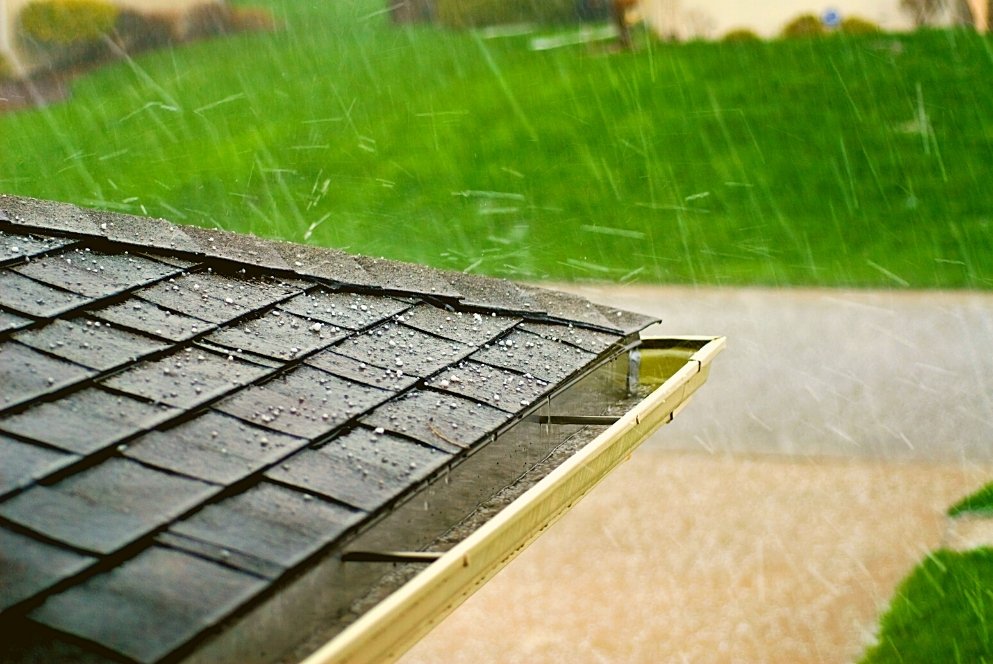All types of weather can play havoc with a roof. Over time, the changes in weather cause the roof to start becoming damaged. This normally takes many years, and those who manufacture roofing materials take normal weather patterns into account. When there are extreme weather conditions involved, this deterioration can occur more quickly. Most storm damage restoration professionals will say one of the most damaging weather conditions for a roof is a hail storm.
Hail may come and go quickly, but the damage left behind can be devastating when left unchecked. What is even worse is that the hail damage can often occur over time, and you may not notice the effects for a year or more. Leaving a hail-damaged roof unrepaired can create a problem with cost as well. Replacing an average roof can cost over twenty thousand dollars. However, hail damage left unfixed can create serious problems throughout the home, often not covered by most homeowners’ insurance. They may pay for the initial hail damage, but most won’t cover the cost of damage that is brought about by waiting on that initial repair. Let’s take a closer look at hail damage and your roof.
Schedule Your Storm Damage Restoration Assessment Today!
How Hail Damages a Roof
The signs of hail damage are often subtle at first, but that can all depend upon the size of the hail, the angle it hits the roof, how long the storm lasted, and factors such as the type of roofing material and age of the material. Second layers of tile are often more susceptible to damage because they are supported by softer roofing material than the bare wood of the structure.
Roofing shingles are most often coated with a protective coating consisting of many tiny granules designed to look nice and cover a protective asphalt lining. The topping is sealed to the asphalt, and then the whole shingle is sealed to the roof. The first sign of hail damage is finding little pieces of the coating flaking off. This is known as spalling. These granules may appear small, but they have an essential job.
Once the granules peel off, the underlying asphalt becomes exposed. This allows moisture to gather in the area and sometimes seep under the broken seal and find its way to the bare roof. The asphalt expands and contracts with temperature changes, and this can cause it to crack, allowing even more moisture in. In addition, the hot sun beating down on the exposed area can soften the material as the UV rays damage it further.
Eventually, water can seep down into your home, causing structural damage to walls and ceilings. That isn’t all. The water can damage electricity. It can also create a condition where the constant dampness allows mold to take hold. This mold will grow and can cause not only a bad smell but can cause the inhabitants of the house to become ill. The roof not only allows water in, but it also allows heat from inside to escape. This makes your home drafty and hard to heat in cooler weather and can cost a great deal of money on heating fuel. Let’s see what kind of damage you may find that indicates you need storm damage restoration.
Hail Damage Signs to Look For
Most of the early signs of hail damage are subtle and may not be noticeable to the untrained eye. You will need to actually get up to roof level to find the damage as only the most extensive can be seen from the ground. Once upon the roof, look for:
- Granules of shingles that are loosely lying on the surface or that have found their way into the rain gutters
- Dents from the impact on the roof surface. These can be easily seen on plain-colored or metal shingles but may be more difficult on other types and patterns.
- Obvious cracks or broken off shingle pieces
- Spots that appear blacker than the rest of the roof. These are easier to see on colored roofs.
- The asphalt or mat appears shiny.
- Soft spots, called bruising, give when you touch them.
Storm Damage Restoration
Unless you are adept at roof repair, it is better to have a professional come out and conduct a roof inspection if you suspect you need a storm damage restoration. The professionals understand how to find even the beginnings of damage that the average person may miss. Insurance companies are also more willing to settle claims if a professional storm damage restoration is done, especially when you can show this occurred within a reasonable amount of time after the hail storm occurred. You can don’t much to protect your home’s roof from all the damage weather can cause, but you can act so that the damage does not become so bad it threatens your health and safety. If you have experienced a hail storm recently, reach out to our storm damage restoration professionals and set up an inspection. You will be glad you did.
